
Majority of local services are now breaching 18 weeks
17/09/2019by Rob Findlay
Last month I noted that “We are very close to the point where achieving 18 weeks is a minority sport”. In July it happened.
At the end of July, according to the latest data, less than 49 per cent of local hospital services were achieving the statutory target that 92 per cent of the waiting list should be within 18 weeks.
So if you work in a specialty that is still achieving 18 weeks, then well done, because you are doing better than most.
In the following discussion, all figures come from NHS England and NHS Improvement. If you have a national statistic that you’d like to check up on, you can download our RTT waiting times fact checker.
For analysis of waiting times performance at a particular organisation, visit our reports page. You can also access maps of the latest waiting times across England for A&E, cancer, and RTT.
England-wide picture
England-wide waiting times have been fairly constant recently, as the waiting list hovered near its regular summer peak and the shape of the waiting list remained good compared with recent years.
In case that sounds like a benign situation, it is also worth remembering that these waiting times are very long at around 23 weeks, far exceeding the statutory target of 18 weeks.
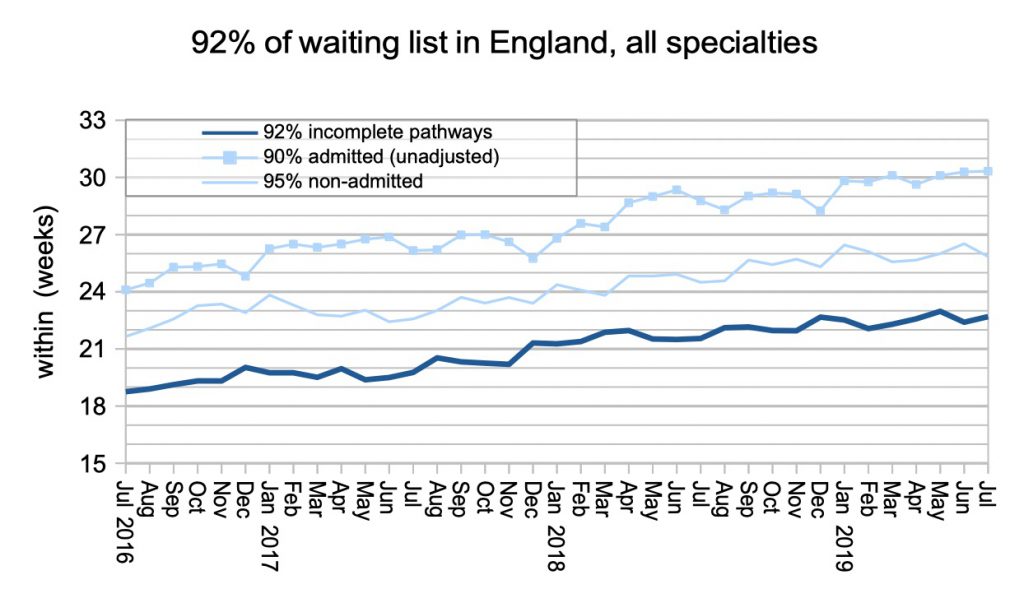
Turning briefly to non-reporting trusts, North West Anglia NHS Foundation Trust dropped out of the data. According to their July board papers they are replacing their PAS.

There was little change in the size of the English waiting list in July, as it hovered around the usual summer peak. Autumn will be a crucial season for list size: in a good year the list shrinks in autumn towards the winter trough, but in a bad year it remains steady and then grows rapidly the following spring.
The red symbols in this chart show how much the waiting list would need to shrink before the 18 week target could be achieved again. They show that over three years worth of waiting list growth would need to be reversed.
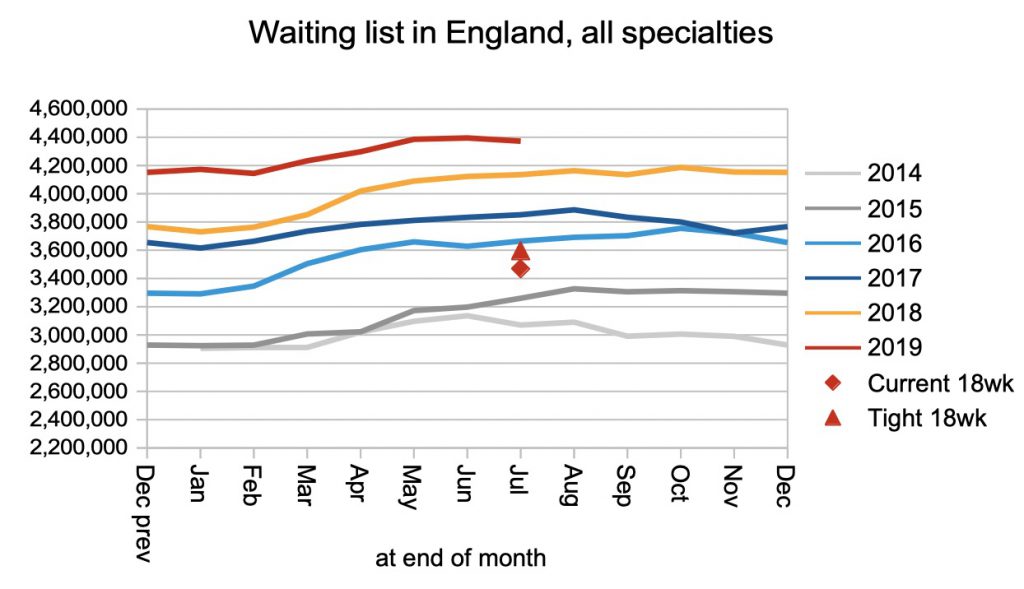
In the long run, the size of the waiting list is the main driver of waiting times. But it is not the only one – the shape of the waiting list is also important. This shape has recently improved, as the index of waiting list management shows, and this is helping with the overall position on waiting times.
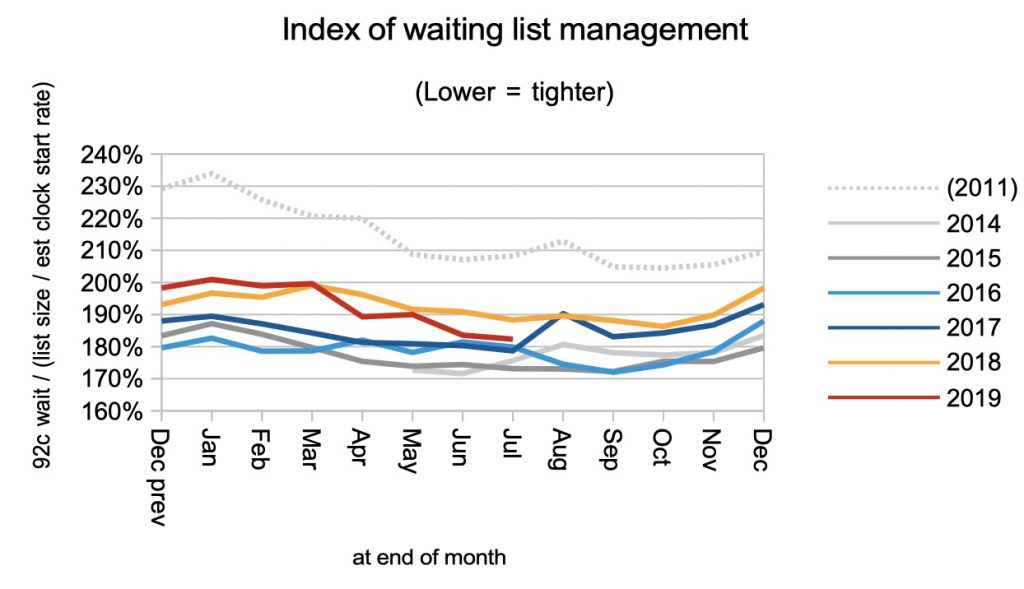
Admissions per working day were lower than any recent July, which (together with the continued exceptional pressure on A&E waiting times) point to ongoing pressures in hospital capacity.
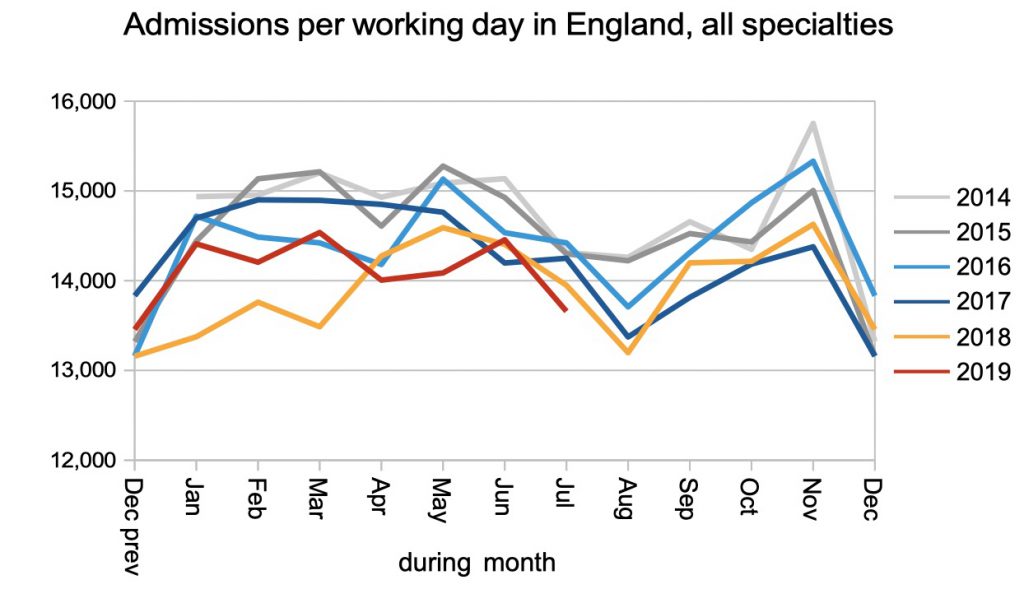
The number of one year waiters has been flatlining since the dramatic achievement of last year’s target to halve it.
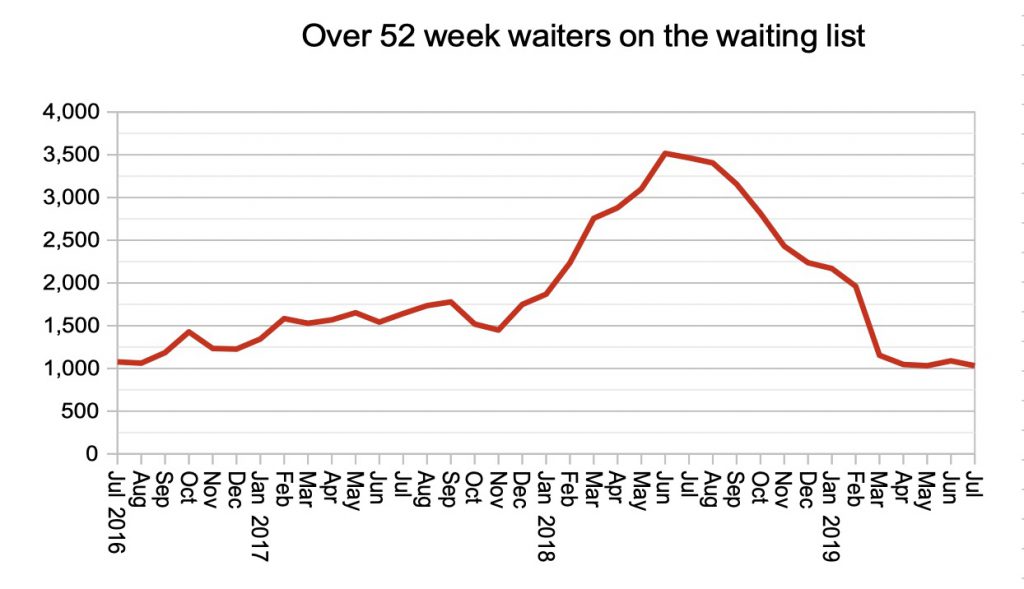
At specialty level, only Geriatric Medicine is achieving 18 weeks. The next shortest-waiting specialty is General Medicine at 19.5 weeks.
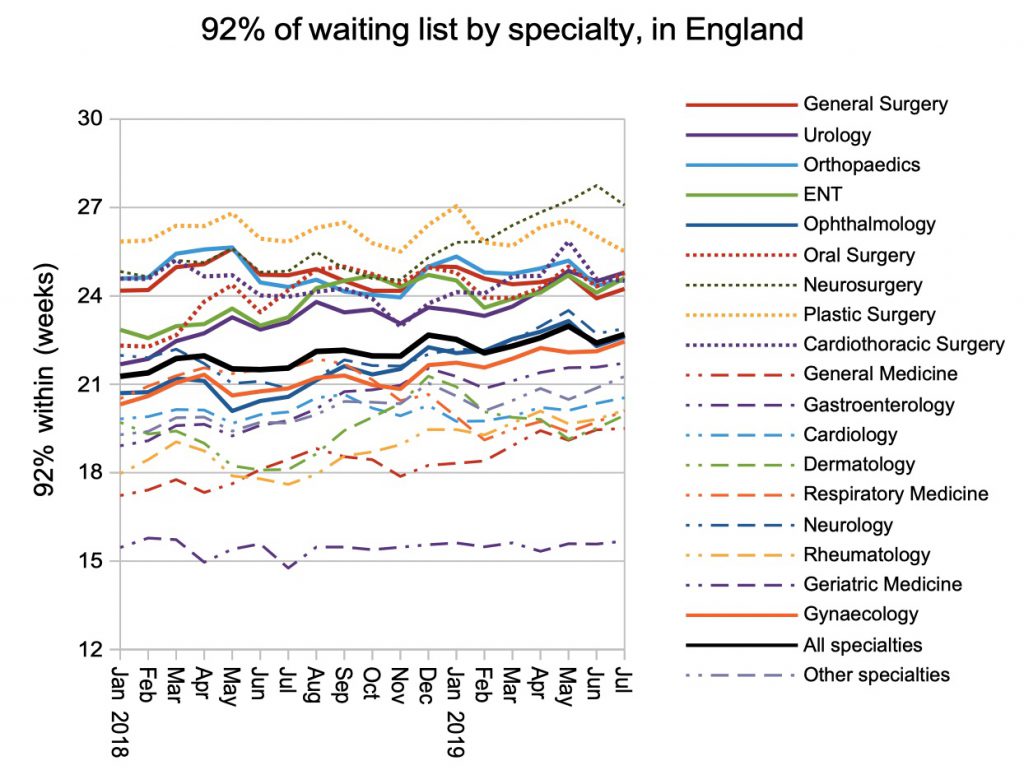
Local detail
The headline news from the July data is that achieving the 18 week target has (as foreshadowed last month) finally become a minority sport.
Of the 2,592 specialties within providers that had significant RTT waiting lists, only 1,267 (48.9 per cent) achieved the “92 per cent within 18 weeks” target at the end of July.
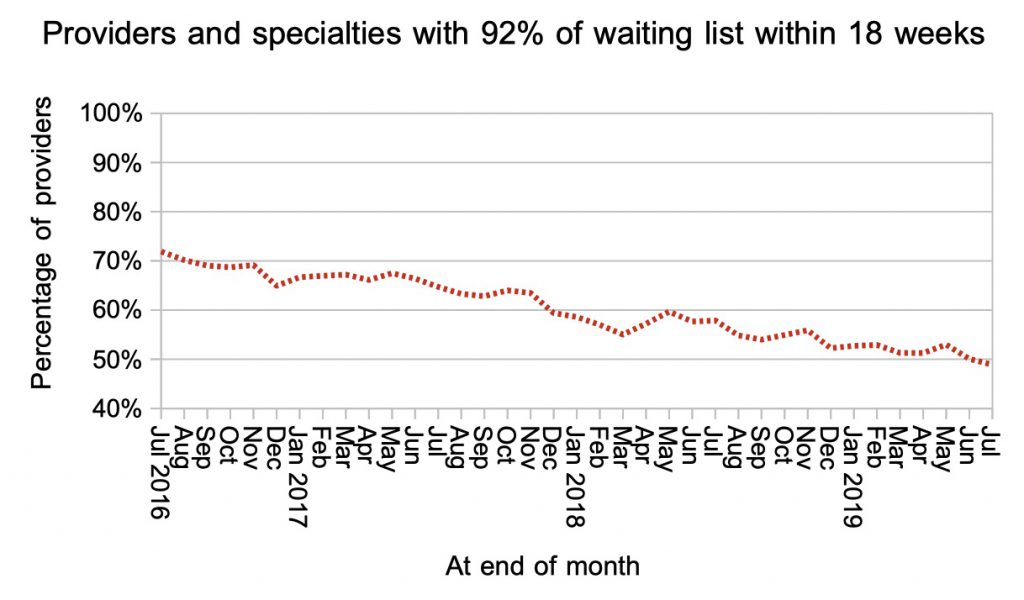
The chart above tracks where the chart below crosses the “18 weeks” line. As waiting times creep up across England, the proportion achieving the target has steadily deteriorated.
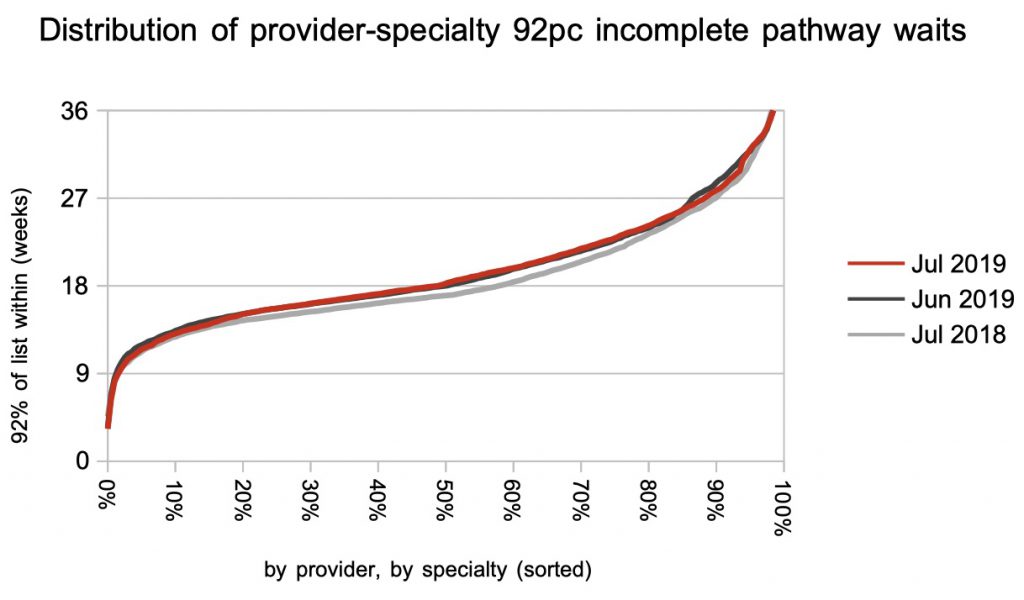
The names of the longest-waiting providers have remained the same, but the waiting times grew longer. Waits at Brighton and Sussex University Hospitals NHS Trust grew from 34.4 to 35.9 weeks during July, and at North Cumbria University Hospitals NHS Trust they grew from 32.4 to 33.3 weeks.
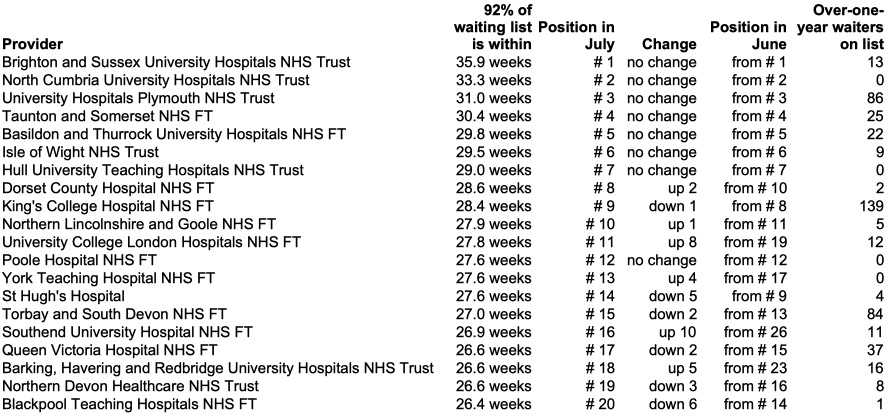
Referral-to-treatment data for August is due out at 9:30am on Thursday 10th October.
Return to Post Index
Leave a Reply
You must be logged in to post a comment.